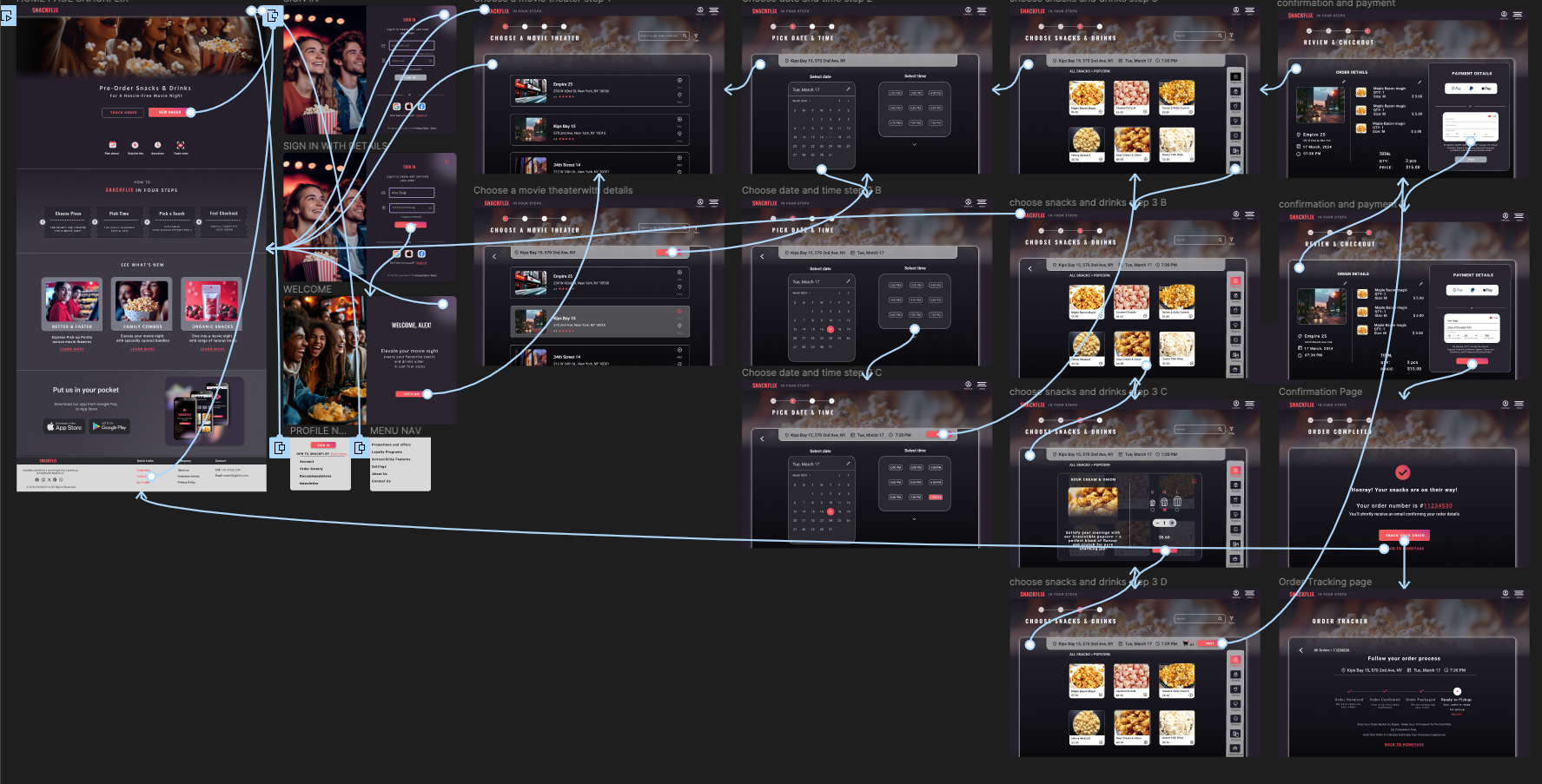…design to inspire.
“I think cinema has this beautiful component. It's a universal language”
SNACKFLIX
Order your snacks and drinks ahead of time
Responsive Web Application design
Case Study
My roles: UX researcher/Visual Designer.
Project duration: Feb. 2024 - Feb. 2024.
Responsibilities: Paper and digital wire framing, low and high-fidelity prototyping, conducting usability studies, accounting for accessibility, and iterating on designs.
Tools used: Figma, Canva, Scketch, AI image generator.
After completing my previous case study, I advanced to the next phase of my design journey by developing a responsive web application catering to both desktop and mobile users. Leveraging responsive web design ensures optimal content viewing and an improved user experience compared to non-responsive applications. This approach ensures easy readability and navigation, making the app mobile-friendly.
So I began by creating an IA for Snackflix's responsive web app and organizing the structure in order to provide a high-level view of a product while keeping the user experience in mind for creating a new order of snacks and beverages that must be as smooth, hassle-free, and accessible to everyone.
So I created a fundamental IA that focuses mostly on two routes for the SNACKFLIX user: new order and track (existing) order.
The next step was to create paper wireframes. Before beginning, I established a list of elements that needed to be included in the wireframes to ensure that I tackle every aspect during the design process.
I want the user to be able to easily create a new order or track an existing order without searching for or scroll down for the appropriate button, so I believe it is more beneficial to have these two primary CTAs up front and above the fold.
Main nav. bar
Track order CTA
New order CTA
How it works
Account/profile
Footer
Digital Transformation of the Wireframes
Transforming Initial Sketches into Figma Designs
While turning my initial sketches into digital designs using Figma, I made several improvements. I followed a design approach that focuses on users, aiming to create a clear and functional design.
At this stage I’ve created one user flow for Desktop and Mobile.
Mockup and Low-Fi prototype
Evolution from Figma Wireframes to Low-Fi Prototype
Following the creation of digital wireframes in Figma, the transition to building a Low-Fi prototype began, establishing the initial user flow. This phase involved continuous iterations, refining the wireframes to enhance the user experience and streamline the flow.
Testing
Usability study:
During a usability study, I did both moderated and unmoderated tests for the responsive web application.
My KPI’s were to determine whether user’s pass was clean and easy for them to reach from point A to B, begginig at the Home Page and ending at the Confirmation Page. Also one’s satisfaction was another important measure to be collected.
During this study - I asked the participants to create a new order from their Desktop device and feedback me about their process.
The mobile version will be iterated according to the desktop low fi prototype feedback.
Usability study findings:
When progressing from first step to the next one - there was no option to view the previously chosen step.
in the visually presented steps - it’s better to create some kind of indication (add colours) so I can see where I am at each stage of the ordering process
Review & Checkout page - I want to be sure I can make changes right before clicking the “buy now” option.
Following the initial usability study test - here is the final high-fidelity prototype presenting cleaner user flows for ordering and tracking snacks and beverages

























